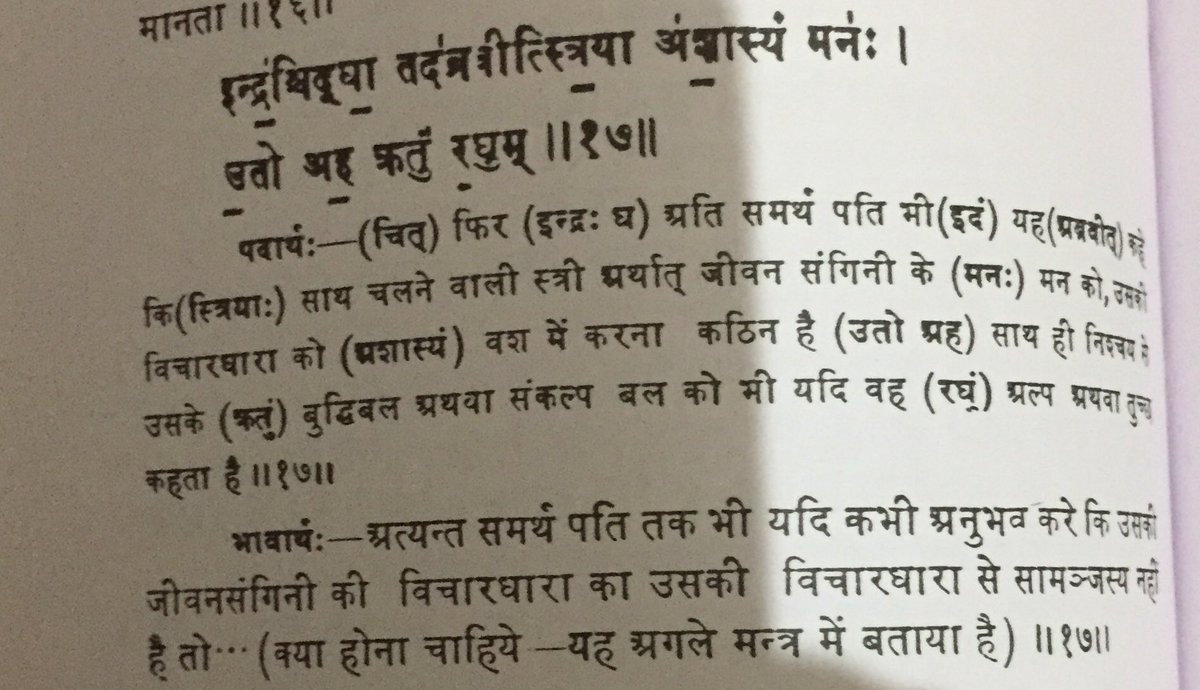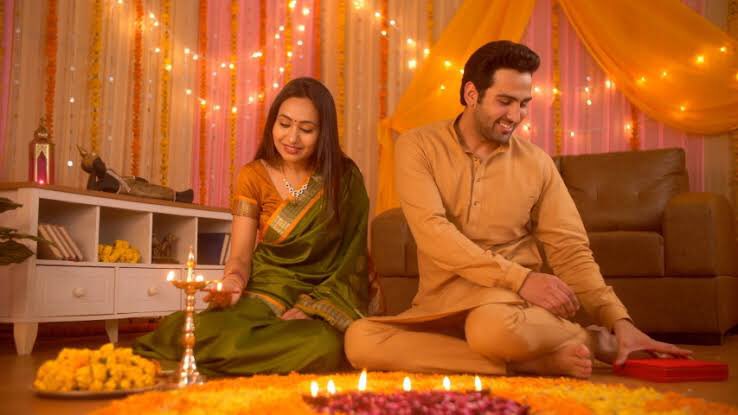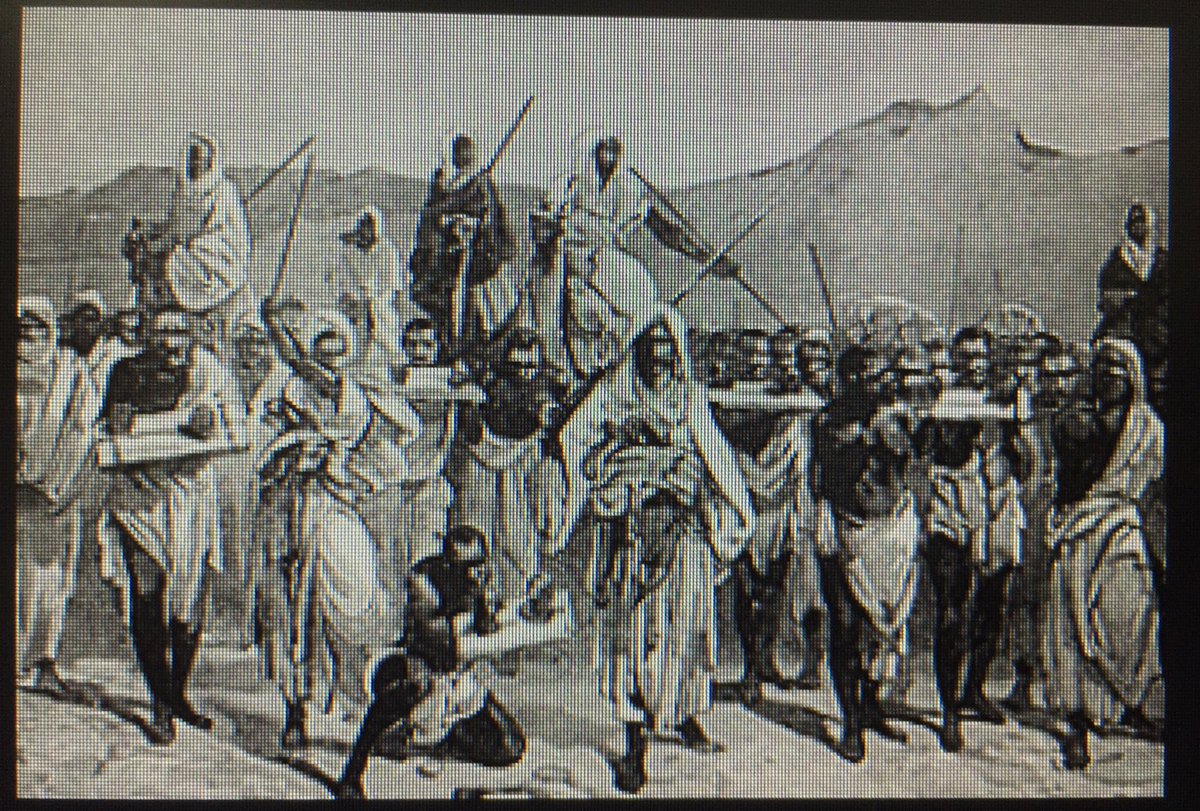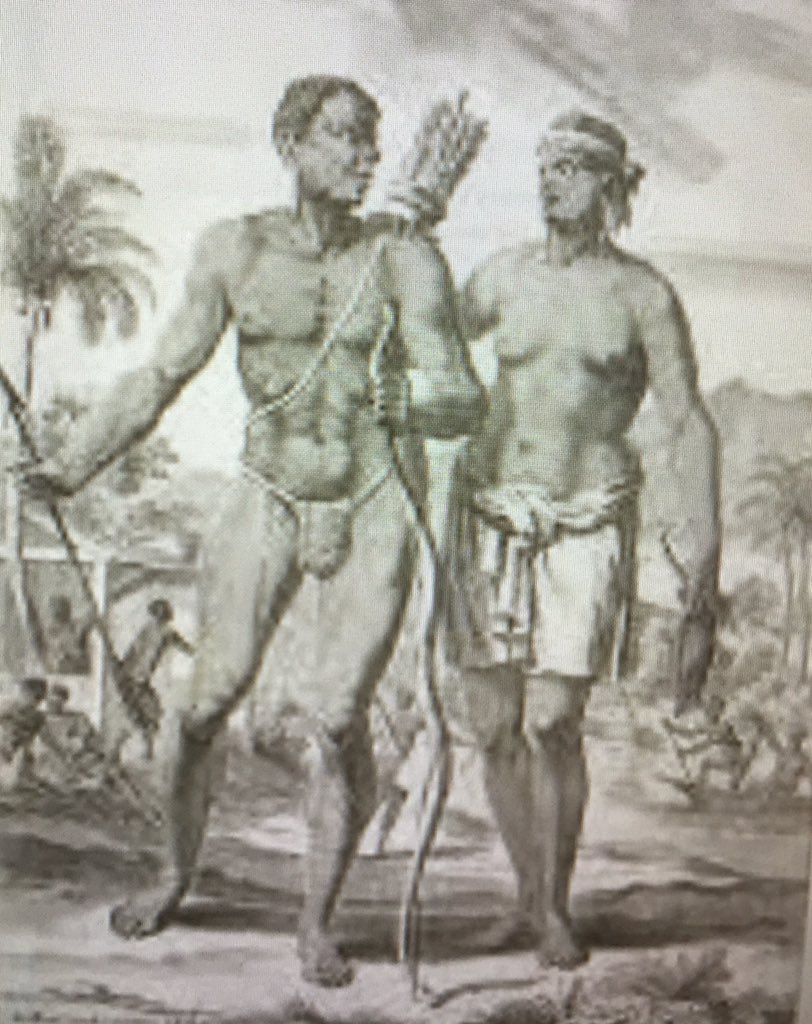
A Mini-#Thread on what Rig Veda says about the roles and responsibilities of a husband and wife in a householder. #husband #wife #vedas #Hinduism #SanatanDharma #family #rigveda #hindu 



Sanatan Dharma has always been a wrongful victim of being allegedly patriarchal, especially when it comes to assignment of roles and responsibilities of husband and wife in managing their households. 

.. However, if we analyse the supreme Sanatani knowledge enshrined in the divine Vedas and strive to comprehend the deeper meaning of the relevant mantras, the directives from the same contrast the above mindless allegation. 

1)Rig Veda 8.33.17 :-
Meaning and Purport : In any household, there is possibility that a capable husband may sometimes feel that he is unable to harmonise his thought process with his wife or is unable to convince her to bring their frames of mind together,..
Meaning and Purport : In any household, there is possibility that a capable husband may sometimes feel that he is unable to harmonise his thought process with his wife or is unable to convince her to bring their frames of mind together,..

2.Rig Veda 8.33.18 :-
Meaning and Purport : Under above or similar circumstances, householders should acknowledge that though both husband and wife are entrusted with the responsibility of managing the household jointly,..
Meaning and Purport : Under above or similar circumstances, householders should acknowledge that though both husband and wife are entrusted with the responsibility of managing the household jointly,..

.. it is the husband only who on account of being physically stronger ‘USUALLY’ , should take up more amount of responsibility in running a home and be more generous while attending to his wife’s needs. 





In this mantra, husband and wife have been compared metaphorically with two horses attached to a chariot. Like in a chariot, no two horses can be of exactly equal strength and the one who is relatively stronger bears more load than other,..
.. in households (chariots) too, the relatively stronger horse (husband, generally) should take up more responsibility in smooth running of the house, including meeting the needs of his wife. 



3.Rig Veda 8.33.19 :-
Meaning and Purport : In continuation to the preceding mantra, it may be noted that though husband is physically stronger and accordingly should bear more responsibility,..
Meaning and Purport : In continuation to the preceding mantra, it may be noted that though husband is physically stronger and accordingly should bear more responsibility,..

.. in the household based yagna, wife is the head ‘priest’, who is regarded as Brahma of this yagna. Thus, it is the duty of the wife, who like Brahma, should guide and enlighten her husband (who is like powerful Indra) in discharging his responsibilities in home. 



However, wife should be humble enough while advising and asserting hers and household needs to her husband , and avoid being arrogant or too confrontational as far as possible. 





At the end of the day, husband and wife (Indra and brahma) should put their best effort to synchronise their progress together like two legs of a person which should be in sync while transversing. 



Thus, it’s quite evident that Rig Veda has taken quite a balanced and pragmatic approach while describing and defining the roles and responsibilities of a husband and wife, under normal circumstances.
There is neither any hint of patriarchy or hyper promotion of feminism like the present day mindless pseudo feminists do or ruthless patriarchs try to revive or implement according to Middle Age interpolated/anti Vedic smritis.
To conclude, let me reiterate that our Vedas have truly celebrated husband-Wife relationship in line with the Ardhanareeswara form of Shiva & Shakti. Thus, no patriarchy or undue favouritism to women in Vedic Sanatan Dharma. 







Source:
Rig Veda, 8th Mandal,
Translation and commentary by Swami Dayananda Saraswati ji .
Published by Arya Prakashan.
Rig Veda, 8th Mandal,
Translation and commentary by Swami Dayananda Saraswati ji .
Published by Arya Prakashan.
@AartiAuthor @harshasherni @PragTi09 @Angriy_BiRd @Ms_Poojaraj @mamatarsingh @Dharma_Chant @Itishree001 @JyotiKarma7 @Shiv_Sharwani11 @Mahender_Chem @DeshBhaktReva @Savage_shree @VaruKrutika @dhingramahima9 @apparrnnaa @i__Mystic @Shailesh_2017 @shradhasumanrai @VedicWisdom1 👆
@Sampoorn10 @nitayuvani @unheardvoice07 @SVOjha @CoreDharma @wanysharma @YoginiPratibha @Mahadevangini @VidyaSanatani @raj_010101 @Skyownsme @Mishra_jiiiii @Tanvangi17 @sayani_pandit @manusmriti3010 @VertigoWarrior @Karma_Kaali @BhagwaDhvaj @yxacnoi @RudraaShiv @VedParmoDharm 👆
@balajidesigr @AntiTrads @DeepaShree_AB @plausible_pleb @sucharita_sj @nitayuvani @Divya_Adishakti 👆
• • •
Missing some Tweet in this thread? You can try to
force a refresh
































